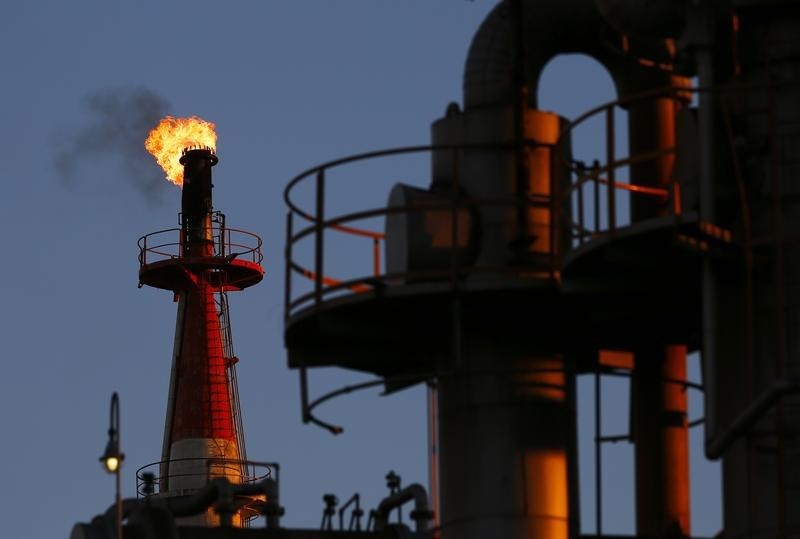* World oil demand to grow by 1.62 million bpd in 2018 -OPEC
* But OPEC expects new supply to outpace demand-growth in 2018
* U.S. oil output hits another record, at 10.38 million bpd -EIA
* OPEC expects to lose market share as non-OPEC output soars
By Henning Gloystein
SINGAPORE, March 15 (Reuters) - Oil prices were stable on Thursday, supported by healthy global demand but held back by the relentless rise in U.S. production that is undermining efforts led by producer cartel OPEC to cut supplies and prop up markets.
U.S. West Texas Intermediate (WTI) crude futures CLc1 were at $61.05 a barrel at 0129 GMT, up 9 cents, or 0.15 percent, from their previous close.
Brent crude futures LCOc1 were at $64.95 per barrel, up 8 cents, or 0.1 percent.
Prices were receiving some support from healthy demand. The Organization of the Petroleum Exporting Countries (OPEC) said on Wednesday that oil consumption was expected to grow by 1.62 million barrels per day (bpd) in 2018. looming over markets has been a relentless climb in U.S. crude output C-OUT-T-EIA , which hit another record last week by rising to 10.38 million bpd, up by more than 23 percent since mid-2016. Commercial crude inventories C-STK-T-EIA were up by 5 million barrels, at 430.93 million barrels. crude production, which has already overtaken that of top exporter Saudi Arabia, is expected to rise above 11 million bpd later this year, taking the top spot from Russia, according to the International Energy Agency. U.S. output, as well as rising output in Canada and Brazil, is undermining efforts by Middle East dominated OPEC to withhold supplies in order to bolster prices.
OPEC on Wednesday raised its forecast for non-member oil supply to almost double the growth predicted four months ago.
The group said non-OPEC producers would boost supply by 1.66 million bpd in 2018. since OPEC expects demand this year to grow by only 1.62 million bpd, that would leave the market slightly oversupplied and may require more or longer supply restraint.
OPEC and several other non-OPEC producers led by Russia began cutting supply in January, 2017 to erase a global glut of crude that had built up since 2014.
OPEC said its combined output dropped by 77,000 bpd to 32.186 million bpd in February, led by declines in Iraq, the United Arab Emirates and Venezuela.
These cuts and rising U.S. output mean that OPEC is losing market share.
"In 2018, demand for OPEC crude is forecast at 32.6 million bpd, down by 0.2 million bpd from the previous assessment and 0.2 million bpd lower than a year earlier," OPEC said.
<^^^^^^^^^^^^^^^^^^^^^^^^^^^^^^^^^^^^^^^^^^^^^^^^^^^^^^^^^^^ GRAPHIC: U.S. oil production and inventories
http://reut.rs/2FDIkrC GRAPHIC: World oil supply and demand balance
http://reut.rs/2FIxGvP
^^^^^^^^^^^^^^^^^^^^^^^^^^^^^^^^^^^^^^^^^^^^^^^^^^^^^^^^^^^>
